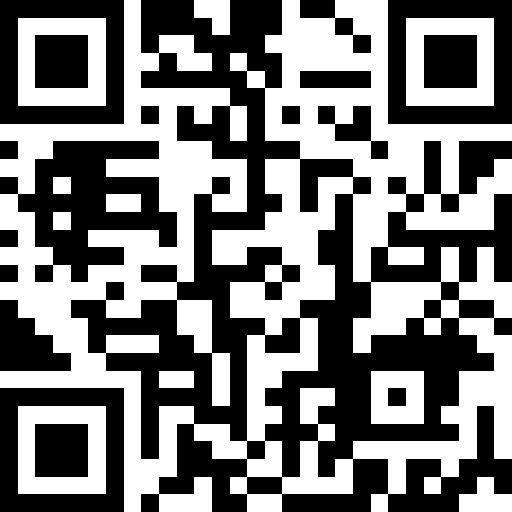Information
-
Report Title (take overview photo of asset):
-
Client / Site
-
Date of Inspection:
-
Location
-
Inspector:
-
Additional SGS Personnel:
-
Report Number:
1.0-6.0 Inspection
1.0 Scope
-
Pressure Vessel Inspection Checklist and reporting
2.0 General Information
-
2.1 Instructions for the Inspector
In completing this checklist, the inspector must respond with a condition status (Good, Fair, Poor or N/A) to address each requirement. For each item photos shall be taken to document the overview and details of the findings. -
2.2 List all documents (drawings, procedures, specifications, etc.) and their revision levels used during this audit below.
-
2.3 This inspection was carried out to the following Inspection Code:
-
2.4 This inspection was carried out to the following Client Specification:
3.0 Vessel Details and History
-
Review drawings and past report(s) and list all previously noted concerns.
4.0 External Inspection
-
External inspection carried out?
-
4.1: Signage:<br>Identify the vessel and Function Location Number , Data plate, plant registration & confined space signs.<br>Verify they are attached and legible. (Take Photo of name plate, etc.)
-
4.1: Housekeeping<br>Check the area near the vessel for drainage, debris, rubbish & general tidiness.
-
4.3: Access structures:<br>Check ladders, stairs, platforms, grating and handrails for damage, paint failure, missing or loose bolts.
-
4.4: Support Structure<br>Check for cracking, loose bolts, deflection & damage
-
4.5: Concrete Foundation / Plinths / Bund<br>Check for broken concrete, spalling, and cracks.
-
4.6: Anchor bolts<br>Check for loose components (washers, nuts), corrosion, deflection and thread condition.
-
4.7: Does this vessel have a sliding arrangement?
-
4.7a: Check visually for condition of sliding arrangement
-
4.8: Earthing cable(s):<br>Note the number of earth connections, check condition, check lugs and bolting are secure.
-
4.9: Insulation status<br>Is this vessel insulated?
-
4.9a: Insulation Cladding (Shell)<br>Visually inspect insulation on the shell.
-
4.9b: Insulation Cladding (Penetrations/Seals)<br>Visually inspect insulation around penetrations, manways, nozzles and support structures.
-
4.9c: Visual - Vessel Shell General Condition <br>Where view-able check shell for bulging, dents, gouges, dimpling & damage.
-
4.10: Visual - Vessel Shell General Condition <br>Check for bulging, dents, gouges, dimpling & damage.<br>Perform UTT on shell plates and dome(s)
-
4.11: Shell Welds (where visible/accessible)<br>Check for corrosion, defects, weld profile and spatter.
-
4.12: Nozzle and Comp. Plate Welds/Weep holes<br>Check for cracking, defects, signs of stress or strain, deflection & clear weep holes.
-
4.13: Structural Connections / Welds<br>Check for cracking, corrosion, deformation & damage.
-
4.14: Threaded connections:<br>Check for leaks, corrosion & damage.
-
4.15: Nozzle condition (Shell):<br>Visually inspect for shell plate dimpling around nozzles, caused by excessive pipe deflection.
-
4.16: Nozzle condition (Welds):<br>Check for cracks or signs of leakage on weld joint at nozzles.
-
4.17: Nozzle condition (Flanges):<br>Visually inspect for flange leaks and leaks around bolting.
-
4.18: Nozzle condition (UTT):<br>Measure pipe/plate thickness by UTT.
-
4.19: Primary Pipe Supports (1st from nozzles):<br>Check for looseness, fretting, misalignment or deflection.
-
4.20: Instruments / Gauges (general condition):<br>Check for damage, looseness, legibility and calibration (if applicable).
-
4.21: Level Gauge/s (general condition):<br>Check for damage, looseness, legibility and calibration (if applicable).
-
4.22: Manway Davit & Weld/Bolted Connections:<br>Check for cracking, looseness,damage & corrosion.<br>MPI of Davit arm welds to door and shell.
-
4.23: Pressure Safety Valve (PSV) / Burst Discs:<br>Check Identification Tag & Calibration Tag/Dates / (Burst Pressure/Orientation).
-
4.24: Pressure Safety Valve (PSV) / Burst Discs:<br>Check for cracking, looseness, damage & corrosion.<br>Visually inspect for flange leaks and leaks around bolting.
-
Review Non-Destructive Testing (shell, nozzles and roof thickness):<br>Does the initial NDT comply / any concerns: <br>
-
Create Action(s), Issue repair scope and review NDT of repairs
-
Post repair NDT findings
-
Notes associated with repairs:
-
Notes associated with external inspection:
-
Actions required and Recommendations for this External Inspection:
5.0 Internal Inspection:
-
Was the internal inspection requested/carried out?
-
5.1: Signage: (if external inspection was not carried out)<br>Identify the vessel and document the Function Location Number , Data plate, plant registration & confined space signs.<br>Verify they are attached and legible. (Take Photo of name plate, etc.)
-
5.2: Prior to entry:<br>Check that the vessel is completely isolated from product lines, all electrical power, steam and utility lines.
-
5.3: Cleanliness:<br>Check for debris, scale, liquids and foreign objects.<br>Check for cleaning required.
-
5.4: Top (North) Head Condition:<br>Check for scale, polishing, erosion, corrosion or damage.
-
5.5: Shell Condition:<br>Check for scale, polishing, erosion, corrosion or damage.
-
5.6: Bottom (South) Head Condition:<br>Check for scale, polishing, erosion, corrosion or damage.
-
5.7: Nozzle Conditions:<br>Check for scale, polishing, erosion, corrosion or damage.
-
5.8: Shell Welds:<br>Check for corrosion & erosion.<br>Check weld profile, defects & spatter.
-
5.9: Head Welds:<br>Check for corrosion & erosion.<br>Check weld profile, defects & spatter.
-
5.10: Nozzle Welds:<br>Check for corrosion & erosion.<br>Check weld profile, defects & spatter.
-
5.11: Structural Attachment Welds (Non-Pressure)<br>Check for corrosion & erosion.<br>Check weld profile, defects & spatter.
-
Review Non-Destructive Examination:<br>Does initial NDE comply?
-
Create Action(s), Issue repair scope and review NDE of repairs
-
Post repair NDE findings
-
Notes associated with repairs:
-
Notes associated with internal inspection:
-
Actions required and Recommendations for this Internal Inspection:
6.0 Vessel summary and certification
-
Notes in regard to fitness for service/return to service for the inspection scope:
-
Fitness for service statement:
-
Remedial action(s):
-
Inspector Name, Qualification and Signature:
-
Reviewer Name, Qualification and Signature:
Approval
-
Date and time of approval
-
Approver's signature






